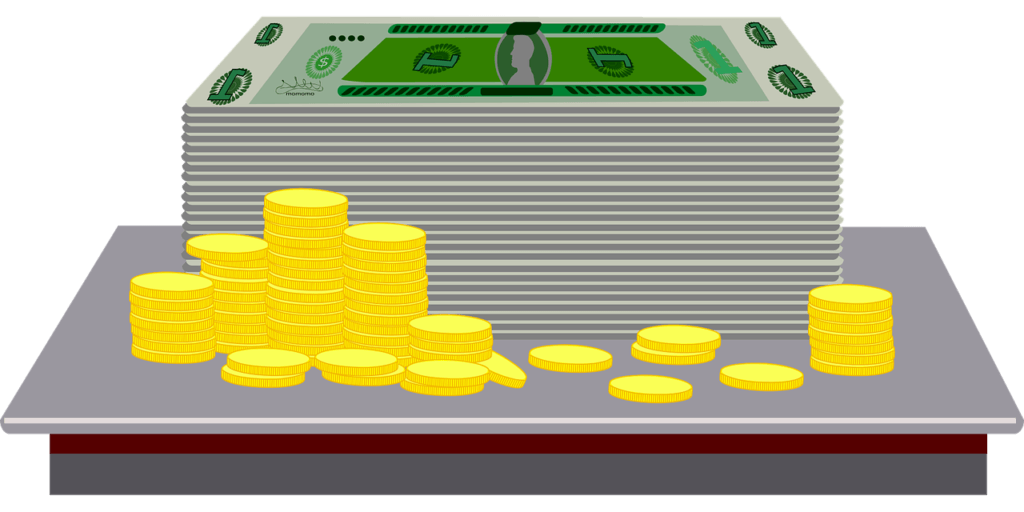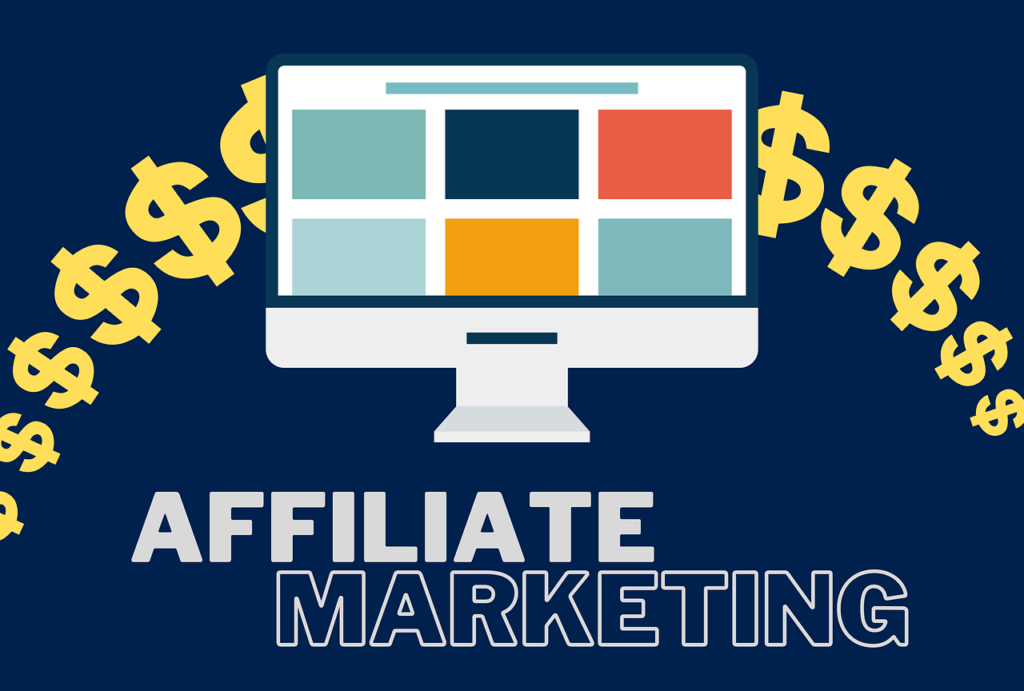If you’re looking to earn some extra cash through email marketing and newsletters, you’ve come to the right place! In this article, we’ll explore how you can leverage these powerful tools to boost your income. Whether you’re a business owner, an affiliate marketer, or simply someone looking for a side hustle, we’ll provide you with practical tips and strategies to make money through email communication. Get ready to transform your inbox into a money-making machine!

1. Building an Email List
Building an email list is the first step towards successful email marketing and monetization. By growing your email list, you can reach a targeted audience who have willingly opted to receive your content and promotions.
1.1 Creating an Opt-In Form
One of the most effective ways to build an email list is by creating an opt-in form on your website or landing page. An opt-in form allows visitors to subscribe to your newsletter or updates by providing their email addresses. Make sure to design the form in a user-friendly and visually appealing manner to encourage more sign-ups.
1.2 Offering Incentives
To entice visitors to provide their email addresses, it’s important to offer incentives such as exclusive content, discounts, or freebies. These incentives give value to potential subscribers and make them more likely to opt-in to your email list.
1.3 Using Pop-Up Opt-Ins
Pop-up opt-ins can be an effective way to capture visitors’ attention and increase email sign-ups. However, it’s important to use them strategically and considerately, ensuring they don’t disrupt the user experience. Timing, frequency, and relevance are key factors to consider when implementing pop-up opt-ins.
1.4 Collecting Emails through Landing Pages
Creating compelling landing pages with engaging content and a clear call-to-action can also help in collecting emails. By directing traffic to dedicated landing pages, you can provide valuable information and encourage visitors to subscribe to your email list.
2. Creating Engaging Content
Once you have built an email list, creating engaging content becomes crucial to keep your subscribers interested and active. By understanding your audience and tailoring your content to their preferences, you can foster stronger relationships and increase conversion rates.
2.1 Understanding Your Audience
To create truly engaging content, it is important to understand your audience’s interests, needs, and pain points. Conduct market research, surveys, and analyze subscriber behavior to gain insights into what resonates with your audience. This knowledge will allow you to tailor your content and make it more relevant and appealing.
2.2 Crafting Eye-Catching Subject Lines
Subject lines play a critical role in determining whether subscribers open your emails or not. Craft compelling subject lines that evoke curiosity, urgency, or provide a clear benefit to the recipient. Experiment with different strategies and monitor open rates to gauge the effectiveness of your subject lines.
2.3 Writing Compelling Email Copy
The body of your emails should be engaging, concise, and easy to read. Use storytelling techniques, personalize the content, and provide value to your subscribers. Write clear and actionable emails that prompt your audience to take the desired action, whether it’s making a purchase, signing up for an event, or visiting your website.
2.4 Personalizing Emails
Personalization is a powerful tactic to make your subscribers feel valued and increase their engagement. Incorporate personalization tokens, such as the subscriber’s name or past purchase history, into your emails. Additionally, segmenting your subscriber list based on demographics, preferences, or behavior allows you to send more targeted and personalized content.
2.5 Using a Clear Call-to-Action (CTA)
Every email should have a clear call-to-action that guides your subscribers towards the desired action. Whether it’s clicking a link, making a purchase, or filling out a form, a strong and prominent CTA increases the likelihood of conversions. Use compelling language and visually appealing buttons to make your CTAs stand out.
2.6 Incorporating Visuals and Multimedia
Visual content, such as images, infographics, and videos, can greatly enhance the appeal and engagement of your emails. Use visuals that are relevant to your content and brand, and ensure they are optimized for different devices and email clients. Multimedia elements can be used to provide additional value, showcase products, or illustrate concepts more effectively.

3. Implementing Effective Email Marketing Strategies
To maximize the impact of your email marketing efforts, it’s important to implement effective strategies and tactics. Automation, segmentation, A/B testing, and optimizing email frequency and timing are crucial aspects to consider.
3.1 Automation and Autoresponders
Automating your email marketing allows you to send targeted emails at the right time, triggered by specific actions or events. Set up autoresponders to welcome new subscribers, deliver lead magnets, follow-up on abandoned carts, or send personalized recommendations. Automation saves time and ensures consistent communication with your audience.
3.2 Segmentation and Targeting
Segmenting your email list based on various criteria, such as demographics, purchase history, or engagement level, allows for more personalized and relevant communication. Tailor your content and offers to each segment, increasing the chances of conversions. Regularly analyze and update your segments to ensure your targeting remains effective.
3.3 A/B Testing
A/B testing involves sending two versions of an email to different segments of your audience and comparing the results to determine the most effective approach. Test different elements, such as subject lines, CTA placement, email layout, or content variations. Use the insights gained from A/B testing to optimize your emails and improve their performance.
3.4 Email Frequency and Timing
Finding the right balance of email frequency is important. Bombarding your subscribers with too many emails can lead to unsubscribes, while sending too few may cause them to forget about your brand. Monitor subscriber engagement and adjust your email frequency accordingly. Additionally, consider the timing of your emails based on your audience’s preferences and time zones.
4. Monetizing Your Email List
Once you have established a loyal and engaged email list, there are various methods to monetize your efforts and generate revenue.
4.1 Affiliate Marketing
Affiliate marketing involves promoting other companies’ products or services and earning a commission for each sale or referral generated through your email list. Partner with relevant and trustworthy brands that align with your audience’s interests, and include affiliate links in your emails. Be transparent and provide genuine recommendations to maintain trust with your subscribers.
4.2 Selling Your Own Products or Services
If you have your own products or services, your email list can be a valuable platform to showcase and sell them. Use email campaigns to launch new products, offer exclusive discounts to your subscribers, or provide updates on existing offerings. Craft persuasive copy and compelling visuals to highlight the benefits and unique selling points of your products or services.
4.3 Sponsored Content and Advertising
Collaborate with brands or advertisers to feature sponsored content or advertisements in your emails. Ensure that the content aligns with your audience’s interests and add value to their experience. Be transparent about sponsored content and clearly distinguish it from your regular emails.
4.4 Direct Sales and Promotions
Promote exclusive sales, limited-time offers, or flash deals to your email list. Email subscribers often appreciate feeling like privileged insiders who receive special discounts or early access. Use persuasive language and create a sense of urgency to drive conversions.
4.5 Joint Ventures and Partnerships
Partner with other businesses or influencers in your industry to leverage each other’s email lists. Collaborate on joint ventures, such as co-branded products, cross-promotional campaigns, or sharing content. This strategy allows you to tap into new audiences and increase your reach.

5. Analytics and Tracking
Tracking the performance of your email marketing campaigns is crucial for optimizing your strategies and improving results. Utilize email marketing software and tools that provide detailed analytics to monitor open rates, click-through rates, and conversions.
5.1 Monitoring Open and Click Rates
Open rates and click-through rates provide insights into how engaging your email content and subject lines are. Analyze these metrics to identify trends, spot areas for improvement, and understand what type of content resonates most with your audience.
5.2 Tracking Conversions and Sales
Set up conversion tracking to measure the effectiveness of your emails in generating sales or desired actions. Use unique tracking URLs, coupon codes, or UTM parameters to attribute conversions to specific emails or campaigns. This data helps you understand the ROI of your email marketing efforts.
5.3 Analyzing Subscriber Behavior
Examine subscriber behavior, such as their interactions with your emails, website activity, and purchase history. Identify patterns and preferences to gain valuable insights into your audience’s interests and engagement levels. Use this data to further personalize your emails and improve targeting.
5.4 Using Email Marketing Software and Tools
Leverage email marketing software and tools to streamline your campaigns and gain important insights. These tools provide features like email automation, segmentation, A/B testing, and analytics tracking. Choose a reliable and user-friendly platform that caters to your specific needs.
6. Building Trust and Maintaining Relationships
Building trust and maintaining strong relationships with your subscribers is crucial for long-term success in email marketing. Here are some strategies to foster trust and loyalty.
6.1 Providing Valuable and Relevant Content
Consistently deliver valuable and relevant content to your subscribers. Be informative, entertaining, or helpful, depending on your brand’s tone and goals. By providing consistent value, you establish yourself as a trusted source of information and increase the likelihood of engagement and conversions.
6.2 Honoring Subscriber Preferences and Privacy
Respecting the preferences and privacy of your subscribers is essential. Give them control over the frequency and types of emails they receive. Implement a clear privacy policy that ensures their information is secure and protected. Promptly honor unsubscribe requests to maintain a positive reputation and build trust with your audience.
6.3 Personalizing Email Interactions
Personalization goes beyond using the subscriber’s name in the email. Tailor your emails based on their past purchases, browsing history, or preferences. Provide targeted recommendations and offers that align with their interests. This level of personalization shows that you understand and value your subscribers as individuals.
6.4 Offering Exclusive Discounts or Benefits
Reward your subscribers’ loyalty by offering exclusive discounts, early access to new products, or special benefits. Make them feel appreciated and valued, encouraging them to remain engaged with your emails and brand.
6.5 Encouraging Feedback and Engagement
Engage your subscribers through interactive content, surveys, and feedback requests. Encourage them to provide opinions, suggestions, or testimonials. This level of involvement fosters a sense of community and encourages subscribers to stay connected and invested.
6.6 Handling Unsubscribes and Bounces
Unsubscribes and bounces are a natural part of email marketing. Respect the decision of subscribers who choose to unsubscribe and promptly remove them from your email list. Regularly clean your email list by removing inactive or bounced email addresses to maintain deliverability and overall list health.
7. Growing Your Email List
Continuously growing your email list is vital for expanding your reach and maximizing your email marketing potential. Here are some strategies to attract more subscribers.
7.1 Promoting Your Newsletter
Promote your newsletter across various channels, such as your website, social media profiles, blog posts, and podcasts. Highlight the benefits of subscribing and the valuable content your subscribers receive. Utilize email capture forms, plugins, or widgets to make it easy for visitors to sign up.
7.2 Opt-In Opportunities on Your Website
Leverage different opt-in opportunities on your website, such as pop-ups, slide-ins, or inline forms. Experiment with different placements, designs, and offers to find what works best for your audience. Ensure these opt-in opportunities are strategically placed without disrupting the user experience.
7.3 Social Media Integration
Leverage your social media presence to grow your email list. Promote exclusive content or incentives that subscribers receive, such as e-books, guides, or freebies. Encourage your social media followers to join your email list and provide easy sign-up options through social media platforms.
7.4 Cross-Promotion with Other Newsletters
Collaborate with other newsletter creators or brands by cross-promoting each other’s newsletters. Find complementary newsletters with similar target audiences and propose mutually beneficial partnerships. This strategy allows you to tap into new audiences and gain more subscribers.
7.5 Referral Programs and Incentives
Implement a referral program where your subscribers can invite their friends or contacts to join your email list. Offer incentives, such as discounts or exclusive content, to both the referrer and the new subscriber. This strategy leverages the power of word-of-mouth marketing and encourages your subscribers to become advocates for your brand.
7.6 Guest Blogging and Collaborations
Guest blog on websites or platforms that cater to your target audience. Include a call-to-action in your author bio or within the article, directing readers to join your email list. Collaborate with other bloggers, influencers, or businesses in your niche to tap into their audience and gain exposure.
8. Maximizing Email Deliverability
Ensuring that your emails reach your subscribers’ inboxes is crucial for the success of your email marketing efforts. Follow these best practices to maximize email deliverability.
8.1 Obtaining Permission and Consent
Send emails only to subscribers who have explicitly given permission and consented to receive your content. Implement a double opt-in process where subscribers confirm their subscription to mitigate the risk of spam complaints.
8.2 Avoiding Spam Triggers
Avoid using spam trigger words, excessive capitalization, or misleading subject lines that may trigger spam filters. Comply with email marketing laws and regulations, such as the CAN-SPAM Act, to maintain a good sender reputation.
8.3 Email Authentication and Verification
Authenticate your email domain and enable Sender Policy Framework (SPF), DomainKeys Identified Mail (DKIM), and Domain-based Message Authentication, Reporting, and Conformance (DMARC). These email authentication protocols help establish trust with email service providers and improve deliverability.
8.4 Maintaining List Hygiene
Regularly clean your email list by removing inactive, bouncing, or unsubscribed email addresses. High bounce rates and low engagement can negatively impact your sender reputation. Use email verification services or tools to identify and remove invalid email addresses.
9. Addressing Legal and Ethical Considerations
With any marketing strategy, it’s important to comply with legal and ethical considerations to maintain trust and integrity. Here’s what you need to consider.
9.1 Complying with Anti-Spam Regulations
Adhere to anti-spam regulations, such as the CAN-SPAM Act (for the United States) or the General Data Protection Regulation (GDPR) (for the European Union). Familiarize yourself with the requirements, such as providing clear unsubscribe options and including your business address in the emails.
9.2 Providing Unsubscribe Options
Include a prominent and easy-to-use unsubscribe option in all of your emails. Honoring unsubscribe requests promptly is crucial to maintain a positive reputation and comply with legal requirements. Make the process simple and ensure subscribers feel heard and respected.
9.3 Protecting User Data and Privacy
Take the responsibility to protect your subscribers’ data and privacy seriously. Implement robust security measures to safeguard personal information. Clearly communicate your data protection practices in your privacy policy and ensure compliance with relevant regulations, such as the GDPR.
9.4 Honoring User Rights and Permissions
Respect user rights and preferences when it comes to data usage, email frequency, and content. Obtain explicit consent for data collection and use. Allow users to update their preferences, access their personal information, or request deletion if required. Maintaining transparency and honoring user rights builds trust with your audience.
10. Sustaining Email Marketing Success
Email marketing is an ever-evolving discipline, and sustaining success requires continuous learning and adaptation. Follow these strategies to continue growing and improving your email marketing efforts.
10.1 Monitoring and Evaluating Performance
Regularly monitor and evaluate the performance of your email campaigns to identify strengths, weaknesses, and areas for improvement. Analyze key metrics, such as open rates, click-through rates, and conversions, to gain insights into email effectiveness. Use the data to make data-driven decisions and optimize your strategies.
10.2 Adapting to Changing Trends
Stay up to date with industry trends and evolving best practices in email marketing. Keep an eye on new technologies, consumer behavior, and emerging strategies. Adapt your approach to leverage new opportunities and stay ahead of the competition.
10.3 Continuous Learning and Improvement
Invest in your knowledge and skills by continuously learning about email marketing. Attend webinars, read industry blogs, and follow thought leaders to stay informed about the latest developments. Experiment with new techniques and strategies, and use data and feedback to refine your approach.
10.4 Staying Informed About Industry Best Practices
Stay informed about industry best practices and guidelines to ensure your email marketing efforts are effective and compliant. Familiarize yourself with reputable resources, industry associations, and forums where you can learn from experts and share insights with fellow marketers.
In conclusion, email marketing and newsletters offer valuable opportunities for monetization. Building an engaged email list, creating compelling content, implementing effective strategies, and nurturing relationships with subscribers are key drivers of success. By following best practices, respecting legal and ethical considerations, and continuously learning and adapting, you can sustain long-term success and achieve your email marketing goals.


